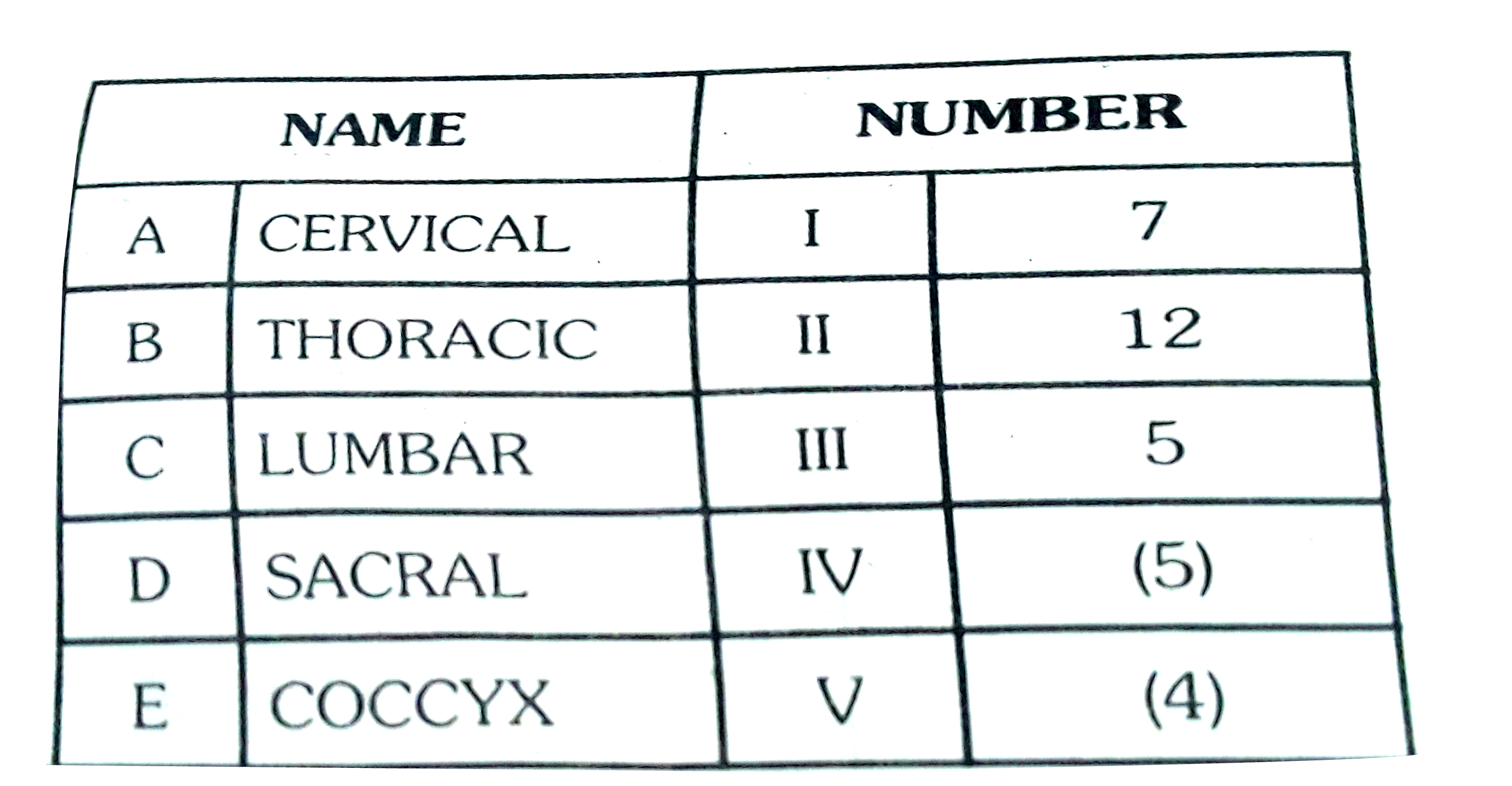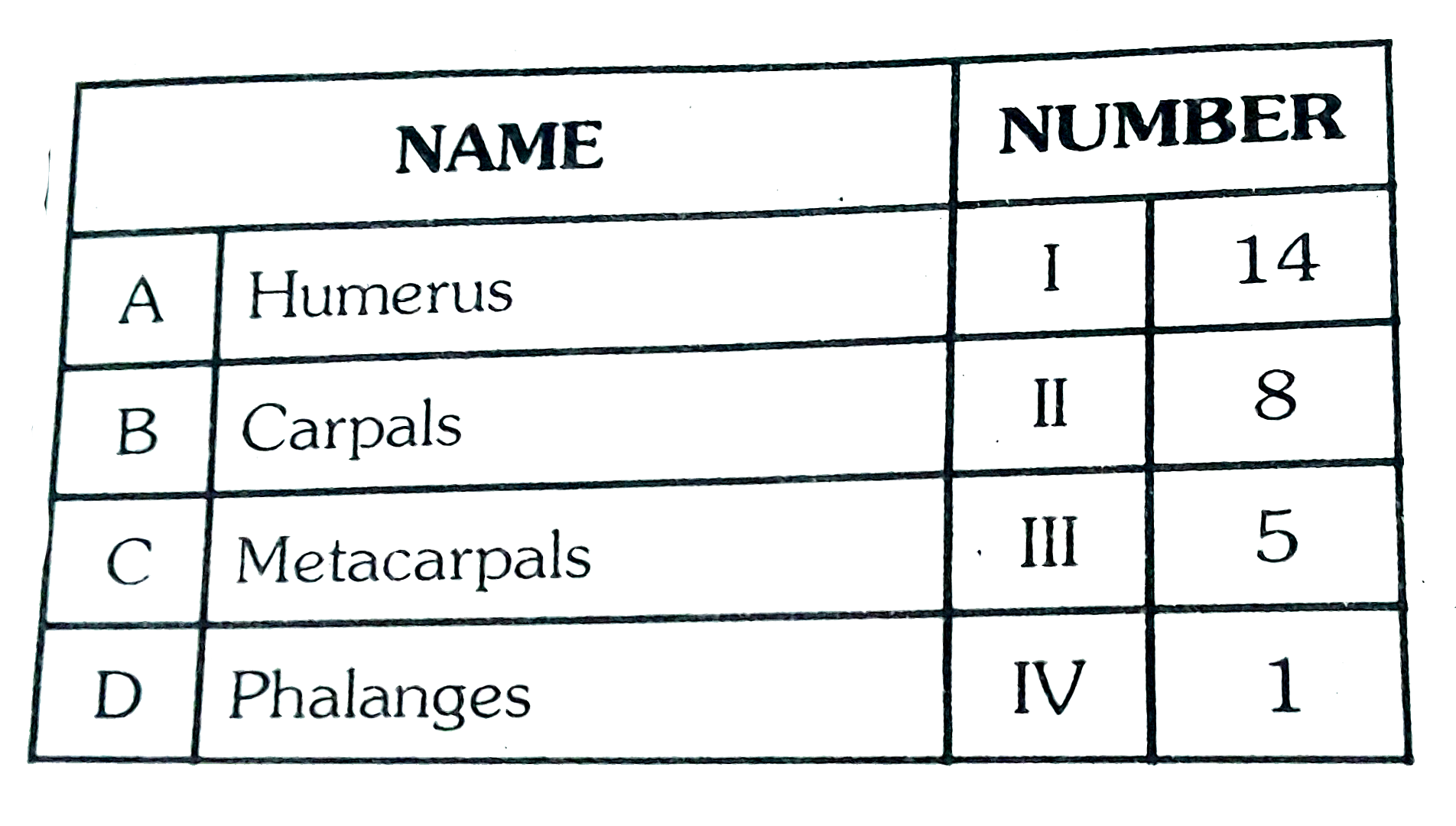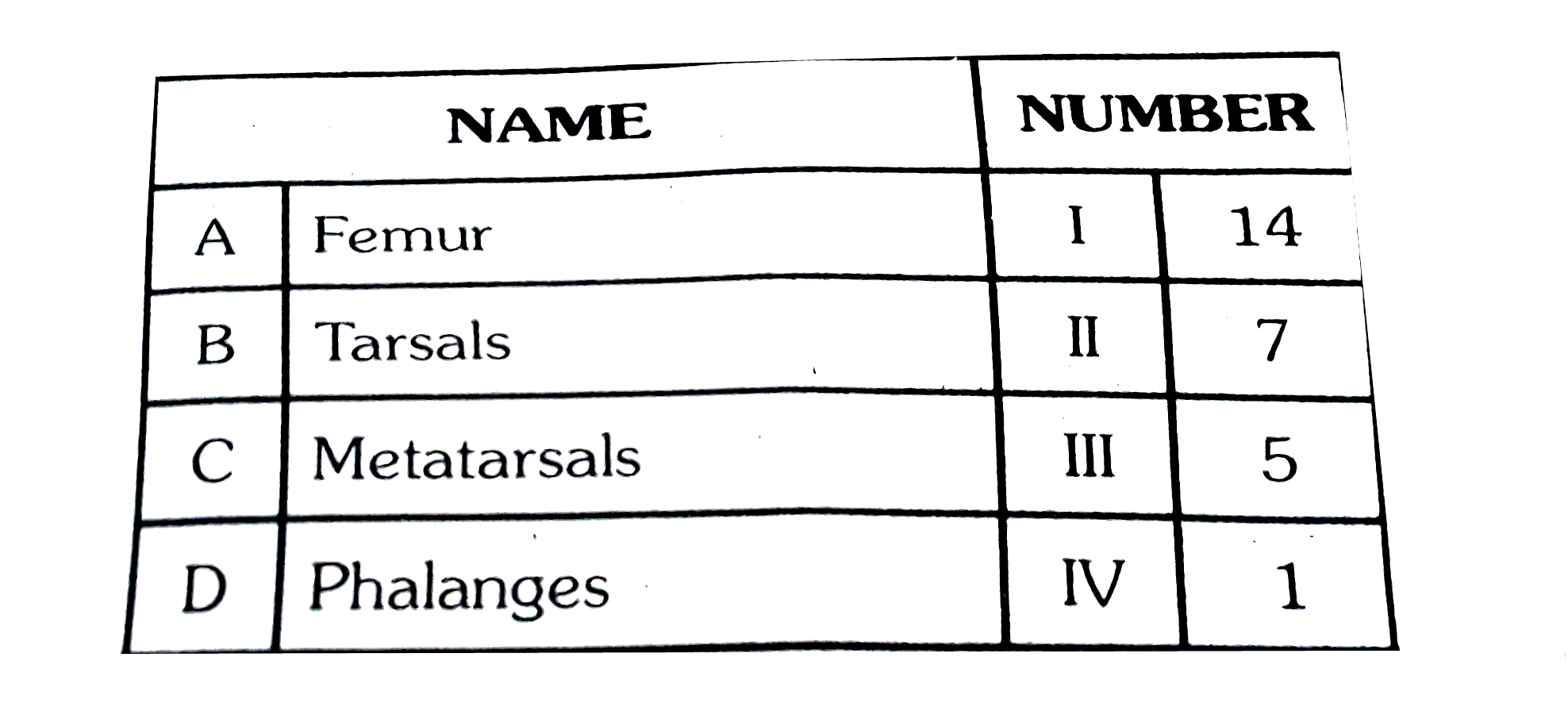Match the following
Type of bone Formed by ExamplesI) InvestingA) Soft tissuesP) OS cordis, bone OS penisII) SesamidB) OssificationQ) Patella bone of embryonic mesenchymeIII) Visceral C) OssificationR) Cranial bone of tendons bonesIV) Endo-D) Cartilage S) limb chondral bones & bone girdles
I-A-Q,II-B-S,III-C-R,IV-D-P
1-B-R,II-C-Q,III-A-P,IV-D-S
I-B-R,II-C-Q,III-D-P,IV-C-R
I-C-P,II-B-Q,III-A-S,IV-D-R
The correct Answer is:B
To solve the matching question regarding types of bones, their formation, and examples, we will break down the information step by step.
1. Identify the Types of Bones:
- I) Investing bone
- II) Sesamoid bone
- III) Visceral bone
- IV) Endochondral bone
2. Determine the Formation Process:
- Investing bone: Formed by ossification of embryonic mesenchyme.
- Sesamoid bone: Formed by ossification of tendons.
- Visceral bone: Formed by soft tissues.
- Endochondral bone: Formed by cartilage.
3. Match the Types of Bones with Their Formation:
- I) Investing bone → B) Ossification of embryonic mesenchyme
- II) Sesamoid bone → C) Ossification of tendons
- III) Visceral bone → A) Soft tissues
- IV) Endochondral bone → D) Cartilage
4. Identify Examples of Each Type of Bone:
- Investing bone: Example is cranial bones (R).
- Sesamoid bone: Example is patella (Q).
- Visceral bone: Examples are os cordis and os penis (P).
- Endochondral bone: Examples are limb bones and girdles (S).
5. Final Matching:
- I) Investing bone → B) Ossification of embryonic mesenchyme → R) Cranial bones
- II) Sesamoid bone → C) Ossification of tendons → Q) Patella
- III) Visceral bone → A) Soft tissues → P) Os cordis, os penis
- IV) Endochondral bone → D) Cartilage → S) Limb bones and girdles
Final Answer:
- I) Investing bone → B) Ossification of embryonic mesenchyme → R) Cranial bones
- II) Sesamoid bone → C) Ossification of tendons → Q) Patella
- III) Visceral bone → A) Soft tissues → P) Os cordis, os penis
- IV) Endochondral bone → D) Cartilage → S) Limb bones and girdles
The correct option that matches all these is Option 2.
- I) Investing bone
- II) Sesamoid bone
- III) Visceral bone
- IV) Endochondral bone
- Investing bone: Formed by ossification of embryonic mesenchyme.
- Sesamoid bone: Formed by ossification of tendons.
- Visceral bone: Formed by soft tissues.
- Endochondral bone: Formed by cartilage.
- I) Investing bone → B) Ossification of embryonic mesenchyme
- II) Sesamoid bone → C) Ossification of tendons
- III) Visceral bone → A) Soft tissues
- IV) Endochondral bone → D) Cartilage
- Investing bone: Example is cranial bones (R).
- Sesamoid bone: Example is patella (Q).
- Visceral bone: Examples are os cordis and os penis (P).
- Endochondral bone: Examples are limb bones and girdles (S).
- I) Investing bone → B) Ossification of embryonic mesenchyme → R) Cranial bones
- II) Sesamoid bone → C) Ossification of tendons → Q) Patella
- III) Visceral bone → A) Soft tissues → P) Os cordis, os penis
- IV) Endochondral bone → D) Cartilage → S) Limb bones and girdles
- I) Investing bone → B) Ossification of embryonic mesenchyme → R) Cranial bones
- II) Sesamoid bone → C) Ossification of tendons → Q) Patella
- III) Visceral bone → A) Soft tissues → P) Os cordis, os penis
- IV) Endochondral bone → D) Cartilage → S) Limb bones and girdles
Topper's Solved these Questions
- STRUCTURAL ORGANISATION IN ANIMALSBOOK - AAKASH SERIESCHAPTER - STRUCTURAL ORGANISATION IN ANIMALSEXERCISE - EXERCISE-I (MUSCULAR TISSUE)
57 Videos
- STRUCTURAL ORGANISATION IN ANIMALSBOOK - AAKASH SERIESCHAPTER - STRUCTURAL ORGANISATION IN ANIMALSEXERCISE - EXERCISE-I (ORGAN AND ORGAN SYSTEM)
4 Videos
- STRUCTURAL ORGANISATION IN ANIMALSBOOK - AAKASH SERIESCHAPTER - STRUCTURAL ORGANISATION IN ANIMALSEXERCISE - EXERCISE-III (PREVIOUS AIPMT/NEET QUESTIONS)
24 Videos
- STRATEGIES FOR ENHENCEMENT IN FOOD PRODUCTIONBOOK - AAKASH SERIESCHAPTER - STRATEGIES FOR ENHENCEMENT IN FOOD PRODUCTIONEXERCISE - EXERCISE-III
68 Videos
- THE LIVING WORLD BOOK - AAKASH SERIESCHAPTER - THE LIVING WORLD EXERCISE - EXERCISE-III (Previous AIPMT/NEET Questions)
12 Videos
Similar Questions
Knowledge Check
Which of the following connects a bone to a bone?
ACartilageBLigamentCTendonDInterstitial fluid
Match the following bones of vertebral column

View SolutionBone and Cartilage
View SolutionWish bone is a bone found in birds
View SolutionWhich of the following bones is not a cranial bone?
View SolutionA bone that is formed within the mesenchyme is called
View SolutionTotal number of bones in limb of a tendon is called
View SolutionSesamoid bone (ossified tendon) is
View Solution

